-
Capital:
Vilnius
-
Currency:
Euro
-
Time zone:
UTC+2 (EET)
-
Driving side:
Right
-
Country calling code:
-
Language(s):
Lithuanian
Lithuania: An Overview
Lithuania, officially the Republic of Lithuania, is located on the southeastern shore of the Baltic Sea in Northern Europe. Visitors delight in its magical landscape―imagine ancient castles, verdant forests, lakes, and dazzling coastline. While nature is the primary draw, the country is also known for its charming capital, Vilnius, like a storybook with its beguiling blend of architecture and widespread green spaces. Along with Schengen Member states Latvia and Estonia, Lithuania gained independence from the Soviet Union in 1991. Lithuania joined the European Union in 2004 and became a member of the Schengen Agreement in in 2007. More than 3 million tourists visit each year.
Travel Documents
Your passport must be valid for at least three months beyond your planned date of departure from the Schengen area. You must have at least one blank page for stamps in your passport. If your stay is beyond 90 days, you will need a Travel Visa. If you are a citizen of and ETIAS-eligible country, you will need an approved ETIAS to travel to Lithuania beginning in 2021. Learn more about the application process and sign up for ETIAS alerts to get the latest news.
Be sure to make photo copies of all your travel documents to take with you on your trip. It also makes sense to leave copies with a family member or friend back home.
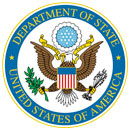
Lithuania : An Overview
Akmenų g. 6
Vilnius, Lithuania
LT-03106
Tel: +370 5 266 5500
Fax: +370 5 266 5510
Web site: https://lt.usembassy.gov

Emergency Lithuania Telephone Numbers
| Police: |
112
|
|---|---|
| Ambulance: |
112
|
| Fire and Rescue: |
112
|
| European Union's universal emergency number: |
112 (112 is the equivalent to 911 in the US)
|
Where to Go
-
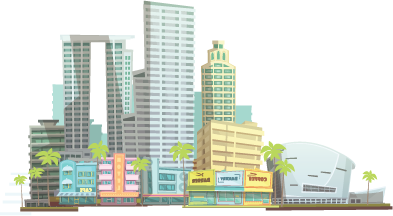
The City
The capitol, Vilnius, is a historical gem of a city noted for its bounty of mixed architecture: baroque, gothic, neoclassical, renaissance, and contemporary. This small city (population less than 600,000) is large in activities and sights. Visitors make the pilgrimage to see one the region’s most significant religious and cultural monuments, The Gate of Dawn (Aušros vartai), the only one of 5 gates to the city still in existence. Other notable landmarks include the Palace of the Grand Dukes of Lithuania and Vilnius Cathedral along with countless history-rich houses of worship and museums. Favorite accommodations are the small city hotels―each quite unique: one features local artisans’ murals and sculptures, and another hotel features rooms named after authors, or their characters, and designed to replicate their namesakes’ writing studios.
-
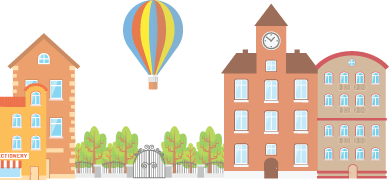
The Castles
In the Lithuainian countryside, in the village of Trakai, visitors can explore a fairy tale castle. Rising from a tiny island on Lake Galvė is Trakai Island Castle (Trakų Salos Pilis). Built in both Gothic and Romanesque styles during the 14th century, the rosy-patinaed fortress was a headquarters of the Grand Duchy of Lithuania (13th century to 1795). Tours are available and visitors can explore medieval museum relics and try their hand at archery, the defense once used to shield the castle from invaders. After visiting the castle, cross the bridge back to the village to meander past Karaites-style houses built by 14th century Turkish emigrants who settled in the village. Cuisine in the village is an eclectic mix of Lithuanian and Karaite.
-
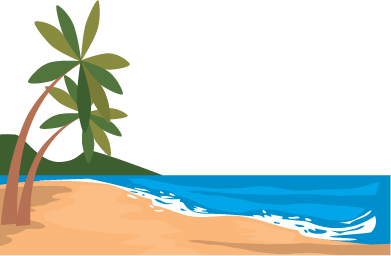
The Coast
Along the Baltic coast, 100 km of unspoiled coastline, is a roughhewn nature playground. Explore throwback resorts, stroll windswept beaches, dine on local seafood, and watch the sun set over the Baltic Sea. The Curonian Peninsula is a narrow barrier of land that separates open sea from the Curonian Lagoon. Wilderness abounds and wanderers may spot seals and dolphins offshore and elk, moose and racoon dogs on land. At Karkle’s Seaside Regional Park, visitors can try netting for amber in the surf with an experienced guide, or in Juodkrantė, take a woodland stroll at Witches’ Hill in search of carved wooden mythical creatures.
-
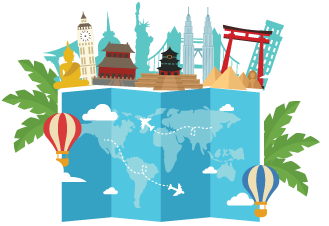
Neighboring Countries
Lithuania is bordered by with Latvia, Belarus, Poland, and Kaliningrad (an exclave of Russia). Lithuania, Latvia, and Poland are members of the Schengen Area. They will be eligible for visa-free travel with an ETIAS visa waiver for entry beginning in January of 2021.
Travels Tips
ELECTRICAL OUTLETS AND ADAPTERS FOR US PRODUCTS
Lithuania uses C, & F Plugs. You will need an adapter and maybe a transformer to use products made for the US electrical grid. Lithuania runs on a 230 (220) volts, 50 hertz AC current, while US runs on 120 (110) volts and a frequency of 60 Hz AC current. Many American products are able to run on 230 (220) volts, 50 hertz AC current. You need to check your electrical product to make sure it is labeled "dual voltage" before you plug it in, otherwise you may burn out the components rendering it useless. Learn more about the different European plugs and currents here.
PICKPOCKETS AND THEFT
Nearly all crimes suffered by tourists in Lithuania are nonviolent and avoidable, however you should be prepared for pickpockets. Europe’s transit systems are notorious for pickpockets.
- Being vigilant is your best friend when you are in high theft areas: train stations, trains, city buses, subways and open air shopping areas.
- Store important documents, money and phones in zippered or buttoned pockets, specialized travel day bags or a money belt.
- You should never leave your bags unattended! Make sure you can see them at all times. Better yet, you should keep in physical contact with your bags in public places.
MOBILE PHONES
First, be sure to check that your phone will work in Lithuania. The easiest way to find out is to check with your mobile phone service provider. You can also find out if your service provider offers international plans for Lithuania. We recommend signing up for an international plan if you plan on using your smart phone to connect to the internet or use the travel apps you may have installed on your phone. If you decide not to sign up for an international calling and data plan, costs can add up very quickly!
Free WI-FI can be easy to access, but can be very slow or not available in the countryside. Sign up for a Virtual Private Network (VPN) services to secure your phone, tablet or computer when using public Wi-Fi networks. This prevents hackers from accessing your device when using free Wi-Fi.
EUROPEAN TAXIS, BUSES AND SUBWAYS
- Taxis - A good rule of thumb is use a prominent taxi service, one that has a company logo and a telephone number on the car. Avoid using taxis that just have a taxi light on the top of the car. Make sure the taxi driver is using the correct rate for the time of the day and day of the week. Nighttime and weekends have higher rates. When taking a taxi that has a set fare, for example to a Lithuania airport, make sure you establish the price before you leave.
- Buses and subways - Most European cities have a great public transportation system. The cost of a transit pass for the entire time of your stay can equal the cost of one or two taxi rides. Check out the ticket options that are offered at subway stations, bus terminals and train stations. Get a transit map or download a transit app to your smart phone. Google maps have transit maps for most Lithuania cities.
EXCHANGING CURRENCY IN LITHUANIA
The most important thing you should understand is how exchange rates work. The Euro usually has a higher exchange rate compared to the US dollar. So if you want to get 100 euros and the exchange rate is $1.10 for one euro, it will cost you 110 dollars to get 100 euros. There are many currency conversion apps you can down load to your smart phone to get up-to-date exchange rates.
Many people like to get Euros through their bank before they leave for their trip. Check out what fees the bank charges for this service. Different banks have different fees. These fees can be expensive, so it pays to shop around.
When in Lithuania avoid using currency exchange companies or booths. These companies can charge up to 15% to 20% of the amount you are exchanging. Lithuania banks can also charge high fees to exchange money. You best bet is to use your ATM card with an established bank to get local currency.
DEBIT CARDS AND ATMS
First, make sure that your ATM card can be used internationally. Second, see what your bank charges for international ATM fees. Third, see what is the maximum amount you can withdraw each day. While there are fees associated with using an ATM card, they are usually much less than the fees charged by Lithuania banks and currency exchange companies. ATM fees are a flat fee not a percentage. So when you are withdrawing money using your ATM card, take out the maximum amount to reduce amount of ATM fees you will incur. Also it is a good idea to use bank ATMs instead of third party ATMs, which can charge higher fees.
CASH VS CREDIT CARDS
Using local cash is key for the European tourist. Some businesses do not accept credit cards and many businesses charge a higher price when using a credit card due to the credit card fee they pay to the credit card company. Many businesses will take US dollars, but then you will need to figure out the exchange rate to ensure you are being charged the correct amount and receiving the correct change. Having smaller bills is better than large bills. Also remember to keep your cash secure in pickpocket proof pockets or a money belt.
US credit cards are widely accepted across Lithuania. Just in case, check with bank to be sure your credit card will work in Lithuania. Before you leave on your trip, sign up for a credit card that has no foreign transaction fees. If you don’t, you may be in for a surprise when you get your credit card statement that contains lots of foreign transactions and currency conversion fees.
It makes sense to use a credit card for hotels, car rentals, Eurail pass, upscale businesses and restaurants. Limit the number of credit cards you take with you. Bring one back up credit card in addition to the main card you intend to use. Be sure to contact your credit card company and let them know the dates you will be traveling abroad.
TIPPING IN LITHUANIA
Generally speaking, if someone in the service industry provides great service for you, a tip of a couple of euros is acceptable, but not required.
- Restaurants - 5% to 10%, with 10% being for over the top service. Be sure to check to see if service has already been included in the bill
- Taxis - round up to the nearest Euro, for example, if the fare is 5 euro give them 6
- Hotel porters - one euro for every bag
Medical Information
Here’s the good news: most of Europe, including Lithuania, has a universal health care system that takes care of everyone – including foreigners. If you need healthcare due to illness or injury while traveling in Lithuania, you won’t have to worry about getting treated. There will be out-of-pocket costs, but those are generally reimbursable depending on your health insurance.
IMPORTANT HEALTHCARE HINTS
- • Pack enough of any prescription medications for the length of your stay, in their labeled, original containers. It is smart to add a few more pills than you need, just in case you stay longer.
- Bring a small first aid kit with over-the-counter necessities.
- In an emergency call 112, that’s the “911” in Europe.
- If you have a non-emergency health issue, go to the nearest pharmacy first. Lithuania pharmacists can actually diagnose and prescribe medications for minor issues like sore throats, sinus and stomach issues and minor aches and pains.
- If the pharmacist can’t help you, go to a clinic. They’re much like our stateside urgent care clinics, and providers can order any tests you might need like x-rays.
- Ask for a House Call. Your hotel will most likely be able to have a physician come to your room if need be.
- Most embassies and consulates have lists of physicians and hospitals in major cities. Go on the U.S. Embassy’s site, choose your destination and look under U.S. Citizens Services section.

